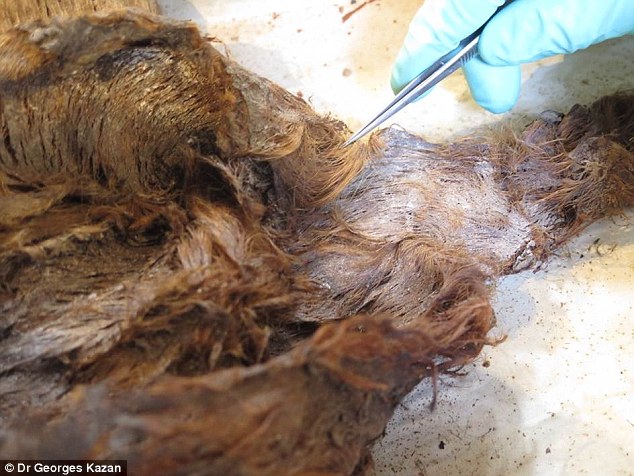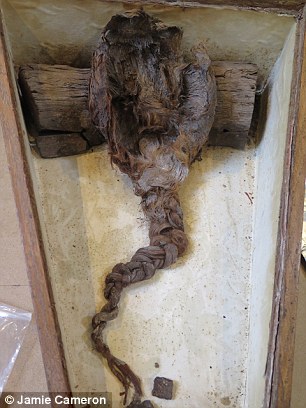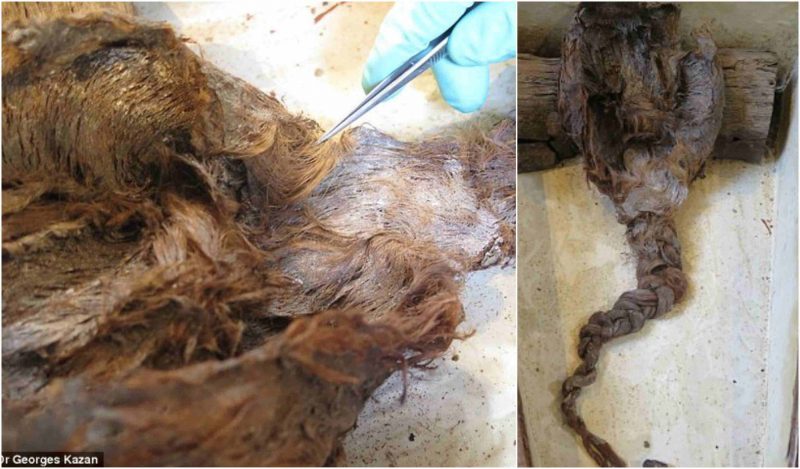Grave digging isn’t for the faint of heart, especially when the graves belong to people centuries of years old. Many experts may never know what lies in the coffins and tombs until they crack the seals to get a good look.
One particularly interesting grave find was an odd braided clump of hair. The hair piece had been found by grave diggers nearly 175 years ago. No one has been able to discover the origins of the hair nor why it was buried in the first place.
Many experts and historians have some idea as to who the hair could have belonged to; it’s possible it could have belonged to Saint Morwenna.

The hair is believed to date somewhere between the years of 895 AD and 1123 AD. It is covered in pine resin, which was most likely what the women had used to keep their hair in place.
In other words, it was used the way women use hairspray today. What still baffles experts is why it was used. Was it used as an everyday hair treatment? Or could it have only been used in funeral preparations?
One of the archaeologists who continues to study the hair, Jamie Cameron, had been absolutely fascinated by the chunk of hair when he was a child. At the time, the hair had been displayed in Romsey Abby in Hampshire.
Currently, the hair is found in a display case at the abbey. It is still in the location where the gravediggers had unearthed a lead coffin that contained a plait of hair with skin attached. Think that’s creepy? The hair was found on a wooden pillow in 1839.
One of the diggers, Mr. J. Major, had written in a note at the time stating that he was asked by the Vicar to investigate whether or not there were bones in the coffin.
He had made a hole in the top of the coffin and put his hand inside of it. He had found that there were no bones but only the scalp of female hair. He had described the hair as being as bright as a living female’s hair. In fact, it had been some of the brightest hair he had ever seen.
Further in the letter, he wrote that there was only one finger bone found in the entire coffin. However, because it was so old, it had apparently turned to dust the moment it touched air, which explains why the hair only survived this long.

Many experts believe that the wooden coffin could have belonged to a rather wealthy person because it was lined with lead. However, there are many different theories as to who it actually belonged to.
If experts are right, and this is Saint Morwenna’s hair, it would prove many theories and stories right. Here is a little history about Saint Morwenna:

Morwenna’s story first appeared in a 12th-century life of Saint Nectan, which stated that she was the daughter of a Welsh king named King Brychan. She had been trained in Ireland before moving to Cornwall and had made her little home in a hermitage named Hennacliff, or the Raven’s Crag. After a few years, it was renamed as Morwenstow or Morwenna’s holy place. The little hermitage had stood on a high cliff looking out over the Atlantic Ocean.
She had decided to build a church on top of the cliff for the local people. She did this all with her bare hands, not asking anyone to help her build. Legends say that she had carried the stones of the church on her head. The stone was found beneath the cliff, and when she stopped for a rest, a spring had flowed forward to the west of the church.
During the early 6th century, her brother Nectan had come to her when she was dying. She had asked him to raise her up to the hill so she could look once more at the ocean’s shore. She was buried at the church in Morwenstow. There are still ancient window depictions that show a woman who is thought to be Morwenna.
